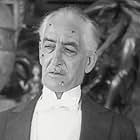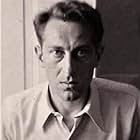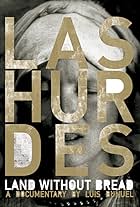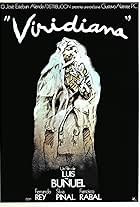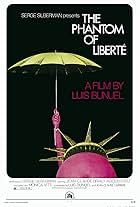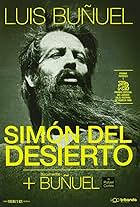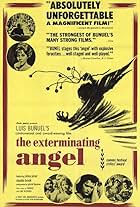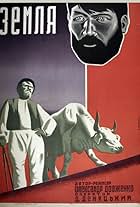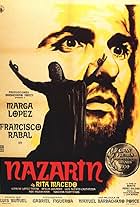A surrealist tale of a man and a woman who are passionately in love with each other, but their attempts to consummate that passion are constantly thwarted by their families, the Church, and ... Read allA surrealist tale of a man and a woman who are passionately in love with each other, but their attempts to consummate that passion are constantly thwarted by their families, the Church, and bourgeois society.A surrealist tale of a man and a woman who are passionately in love with each other, but their attempts to consummate that passion are constantly thwarted by their families, the Church, and bourgeois society.
Germaine Noizet
- Marquise of X
- (as Mme Noizet)
Bonaventura Ibáñez
- Marquis of X
- (as Ibanez)
Jean Aurenche
- Bandit
- (uncredited)
Jacques B. Brunius
- Passer-by in the Street
- (uncredited)
Juan Castañe
- Bandit
- (uncredited)
Pancho Cossío
- Lame Bandit
- (uncredited)
Juan Esplandiu
- Bandit
- (uncredited)
- Director
- Writers
- All cast & crew
- Production, box office & more at IMDbPro
Storyline
Did you know
- TriviaLuis Buñuel and Salvador Dalí had effectively fallen out by the time the film went into production to the extent that Dali refused to have anything to do with the actual making of the film. On the first day of shooting, Buñuel chased Dalí off the set with a hammer.
- Quotes
Young Girl: I have waited for a long time. What joy to have our children murdered!
- Alternate versionsThis film was published in Italy in an DVD anthology entitled "Un Chien Andalou", distributed by DNA Srl. The film has been re-edited with the contribution of the film history scholar Riccardo Cusin . This version is also available in streaming on some platforms.
- SoundtracksAve Verum Corpus K. 618
Written by Wolfgang Amadeus Mozart
Featured review
Just a few days prior to viewing "L'Age d'Or," I had sketched out a few of my views on Surrealism, and will begin by complimenting this review with them...
"Possibly the most accurate description of surrealism came from film director Luis Bunuel when he called it `a rape to the conscious.' This is how it is, and how it should be, for it is a form of art that forces the spectator into the paradoxical mind state that is surrealism. To view a document of surrealism is to be simultaneously repulsed and delighted. As such, this is surrealism: the blending of two or more contradictory emotions to form one emotion divorced from logic. There can not realistically be a like or dislike of a piece of pure surrealist art, for to like or dislike something requires decision, and decision requires logic. Surrealism is an art form to be experienced purely on a visceral level, and not, as many rational forms of art, on an intellectual one. Likewise, the creation of surrealist art requires the subversion of the intellect, for it demands complete spontaneity, unsuppressed by ego or super-ego dictatorship. So in many ways surrealism is the most pure form of art."
If surrealism is the most pure example of art, then "L'Age d'Or" is the most pure example of cinema, perfectly fitting the requirements stated above. It is a delightfully subversive, ecstatically liberating, maddeningly offensive bid for individual freedom. And, most ironically, the truest love story ever told!
Though L'Age d'Or has a firmer plot line than "Un Chien Andalou," Bunuel's previous film, a 16 minute marvel, it is still more dreamlike. This is because while "Un Chien Andalou's" surrealist images are more contained, one bizarre image after another forming a barely apprehensible link, "L'Age d'Or's" are far more detached, because they jut awkwardly out of a noticeable plot line. Surrealism must accentuate the bizzare found in a perfectly normal situation, and while "Un Chien" does this, there is still very little normal in the film. Not to say that it is any less inspired than "L'Age d'Or," quite the contrary, but ironically, it is "L'Age d'Or's" use of plot that makes it all the more surreal.
The "plot" of "L'Age d'Or" is about how we compromise ourselves in the name of society, more specifically how we compromise our sexual desire. Whether the man and the woman, the centers of the film, trying desperately to overcome social obstacles to consummate their love, are actually in love is never made perfectly clear, but they do suffer the same barriers couples find in society today. The majority of the humor in the film comes from the ways its immortal couple disrespects this need to compromise, and the sexual misplacements that occur when they are forced to abide by it (the infamous toe fellatio scene is hysterically erotic). Another recurring idea is that society is built on this compromise, and due to it, is always lingering on the edge of madness.
Like he did with "Un Chien Andalou," in "L'Age d'Or" director Bunuel disrupts rational time and space continuum to satisfy his own flights of fancy. In an early sequence, a group of people, dressed in contemporary 30's clothing, step off some historic looking ships to lay the first stone of what is to be Imperial Rome. We then cut to Rome in it's contemporary glory, where we find the people looking no different, and the main character's, seen during the previous scene, not really looking any older. What is Bunuel trying to say with this scene? That things do not really ever change. Maybe he's just once again indulging in the beauty of the irrational.
The beauty of the irrational... That was something Bunuel clung to throughout his career, but it was never again so evident, so pure as it was in the days of "L'Age d'Or." I spent a great deal of time searching for this little treasure, and now that I've found it, I have no regrets. Love it or hate it, love it and hate it, "L'Age d'Or" is the type of film that will never be made again. It is too alive with the possibilities of it's medium, too fresh to be reproduced. And too brilliant, audacious, and liberating to be topped.
"Possibly the most accurate description of surrealism came from film director Luis Bunuel when he called it `a rape to the conscious.' This is how it is, and how it should be, for it is a form of art that forces the spectator into the paradoxical mind state that is surrealism. To view a document of surrealism is to be simultaneously repulsed and delighted. As such, this is surrealism: the blending of two or more contradictory emotions to form one emotion divorced from logic. There can not realistically be a like or dislike of a piece of pure surrealist art, for to like or dislike something requires decision, and decision requires logic. Surrealism is an art form to be experienced purely on a visceral level, and not, as many rational forms of art, on an intellectual one. Likewise, the creation of surrealist art requires the subversion of the intellect, for it demands complete spontaneity, unsuppressed by ego or super-ego dictatorship. So in many ways surrealism is the most pure form of art."
If surrealism is the most pure example of art, then "L'Age d'Or" is the most pure example of cinema, perfectly fitting the requirements stated above. It is a delightfully subversive, ecstatically liberating, maddeningly offensive bid for individual freedom. And, most ironically, the truest love story ever told!
Though L'Age d'Or has a firmer plot line than "Un Chien Andalou," Bunuel's previous film, a 16 minute marvel, it is still more dreamlike. This is because while "Un Chien Andalou's" surrealist images are more contained, one bizarre image after another forming a barely apprehensible link, "L'Age d'Or's" are far more detached, because they jut awkwardly out of a noticeable plot line. Surrealism must accentuate the bizzare found in a perfectly normal situation, and while "Un Chien" does this, there is still very little normal in the film. Not to say that it is any less inspired than "L'Age d'Or," quite the contrary, but ironically, it is "L'Age d'Or's" use of plot that makes it all the more surreal.
The "plot" of "L'Age d'Or" is about how we compromise ourselves in the name of society, more specifically how we compromise our sexual desire. Whether the man and the woman, the centers of the film, trying desperately to overcome social obstacles to consummate their love, are actually in love is never made perfectly clear, but they do suffer the same barriers couples find in society today. The majority of the humor in the film comes from the ways its immortal couple disrespects this need to compromise, and the sexual misplacements that occur when they are forced to abide by it (the infamous toe fellatio scene is hysterically erotic). Another recurring idea is that society is built on this compromise, and due to it, is always lingering on the edge of madness.
Like he did with "Un Chien Andalou," in "L'Age d'Or" director Bunuel disrupts rational time and space continuum to satisfy his own flights of fancy. In an early sequence, a group of people, dressed in contemporary 30's clothing, step off some historic looking ships to lay the first stone of what is to be Imperial Rome. We then cut to Rome in it's contemporary glory, where we find the people looking no different, and the main character's, seen during the previous scene, not really looking any older. What is Bunuel trying to say with this scene? That things do not really ever change. Maybe he's just once again indulging in the beauty of the irrational.
The beauty of the irrational... That was something Bunuel clung to throughout his career, but it was never again so evident, so pure as it was in the days of "L'Age d'Or." I spent a great deal of time searching for this little treasure, and now that I've found it, I have no regrets. Love it or hate it, love it and hate it, "L'Age d'Or" is the type of film that will never be made again. It is too alive with the possibilities of it's medium, too fresh to be reproduced. And too brilliant, audacious, and liberating to be topped.
- How long is The Golden Age?Powered by Alexa
Details
- Release date
- Country of origin
- Language
- Also known as
- Age of Gold
- Filming locations
- Cabo de Creus, Girona, Catalonia, Spain(opening sequence - landscape)
- Production company
- See more company credits at IMDbPro
Box office
- Gross US & Canada
- $32,712
- Opening weekend US & Canada
- $7,940
- Feb 1, 2004
- Gross worldwide
- $32,712
- Runtime1 hour 3 minutes
- Color
- Aspect ratio
- 1.20 : 1
Contribute to this page
Suggest an edit or add missing content















